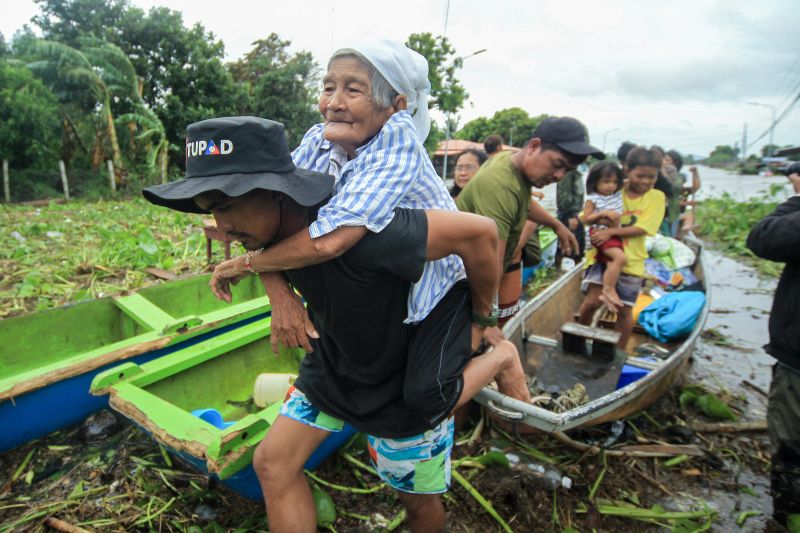Imperious and unpredictable, nature poured its wrath on the Philippines in the form of Tropical Storm Trami, leaving two dozen fatalities and marked destruction in its wake. The storm, which originated from the Pacific Ocean, made its somber passage across the country in recent days, resulting in significant flooding and landslides throughout the impacted areas.
The invisible tempest that is meteorological prediction anticipated Tropical Storm Trami’s arrival, but the sheer severity and widespread calamity it engendered were beyond any forecasts. Despite preparation efforts, the storm’s merciless onslaught clearly illustrated our humble circumstances when exposed to nature’s might.
Trami’s venom was felt with vehemence in the northern and central regions with most fatalities and damages reported from these places. The precise, torrential downpour relentlessly bourgeoned the water bodies, causing rivers to breach at their seams. This abrupt increase in water levels smothered whole communities under its merciless surge, taking with it residencies, facilities, and tragically human lives. The scene was cast with cars sailing like boats and people scrambling to higher grounds wherever and whenever possible.
As if severe flooding wasn’t cruel enough, Tropical Storm Trami also instigated several landslides in the regions it traversed. Rain-saturated soil gave away under gravitational force, dictating doom for the unfortunate souls caught in its trail. Residences were buried, pathways blocked and communication disrupted. It wasn’t just the immediate devastation that took the toll, the ensuing processes of rescue, reestablishment and restoration posed almost insurmountable challenges for the struggling communities.
However, amid the chaos and catastrophe, the resilience and unity of the Filipino population resonated. Officials, non-profit organizations and ordinary citizens rallied together to participate in rescue and relief operations. Individuals, soaked to their skins, waist-deep in water, were seen salvaging what they could of their lives while helping out their neighbors. This adversity galvanized an enormous humanitarian response, highlighting the collective strength of the human spirit in times of crisis.
Furthermore, the Philippine government, local authorities and international organizations established emergency response measures promptly. Rescue teams aided in locating and evacuating stranded residents while relief goods were transported to the affected areas. The Department of Social Welfare and Development provided financial aid to the families of victims and to those who were displaced. The international community also extended their support through monetary donations and supplies.
In terms of infrastructure, various sectors underwent immediate recovery initiatives to restore basic necessities like power and communication lines.






























